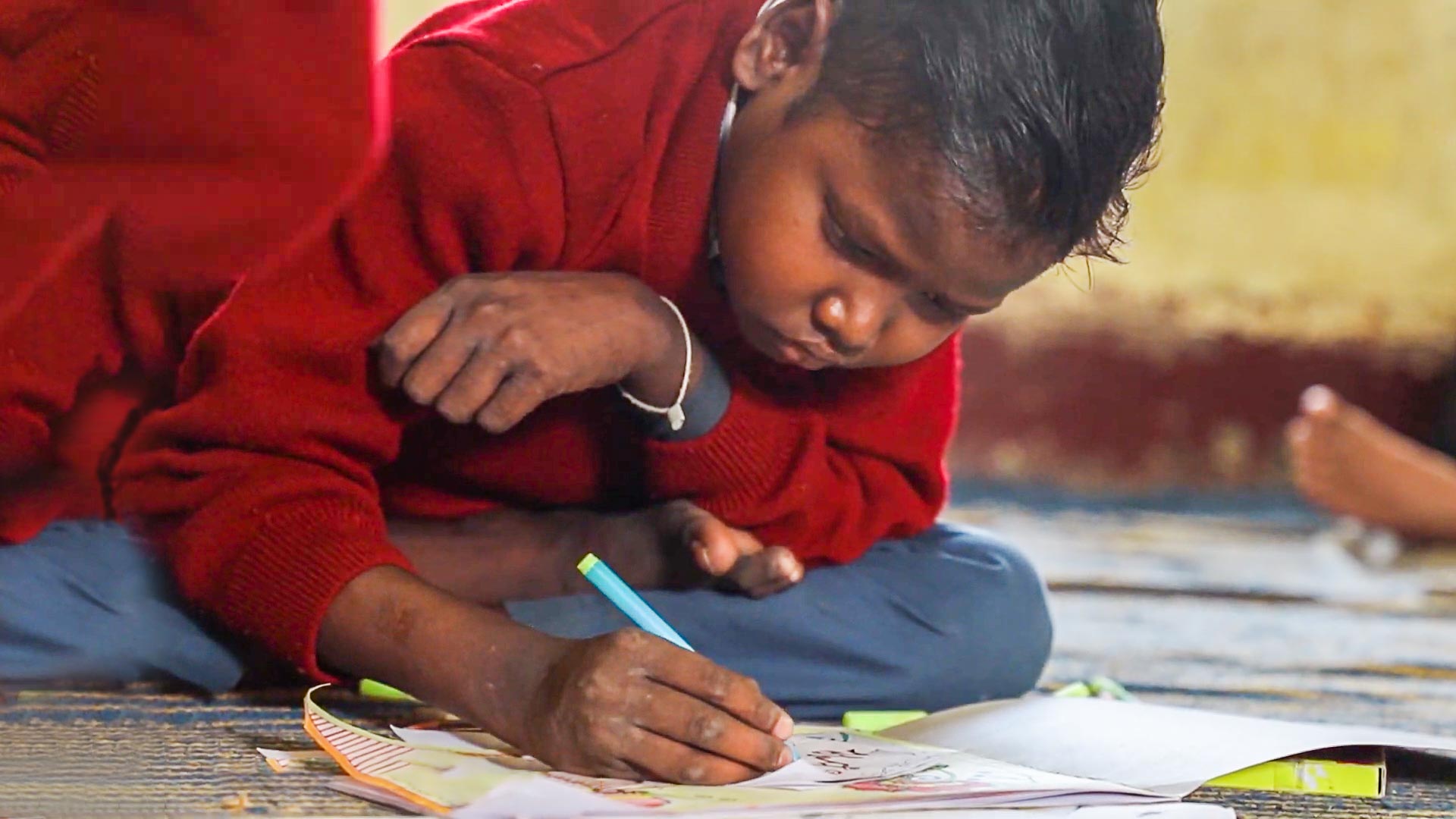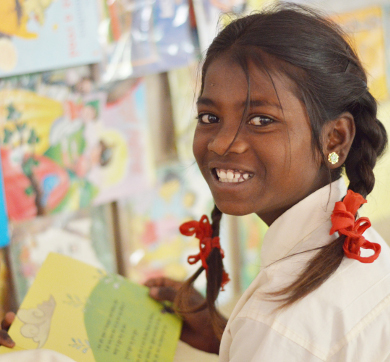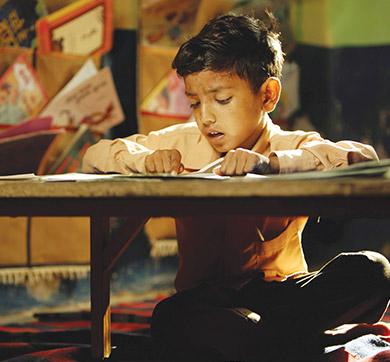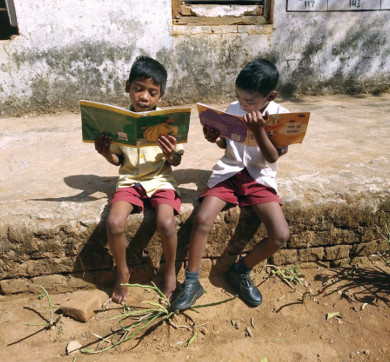June 2020 | 2984 words | 11-minute read
The only home Gita Kumari* remembers is the Tatanagar railway station in Jamshedpur, where she lived with her younger brother, younger sister and mother. “One night, when we were asleep, our mother took our sister, but left the two of us and went away,” she says. She was 7 then and her brother 5.
“To survive,” Gita continues in a matter-of-fact manner, “we picked bottles, begged, swept the trains or stole. We would use whatever money we had to buy drugs. But the worst part of living at the station was the men who abused us. If we resisted, they would threaten to beat us or worse. We lived like that for almost two years.”
That was until two Tata Steel employees approached them in 2017 and asked them if they wanted to study.
“My brother and I were on our way to sell bottles we had collected when they spoke to us,” Gita recalls. “We didn’t know what studies meant, so we said no. But then I thought it could be a way of escaping the abusers. Around that time, my brother’s leg was fractured, and since they promised to help, we decided to give it a chance.”
Gita, then 9, and Ravi*, then 7, were brought to Tata Steel’s Masti Ki Pathshala campuses.
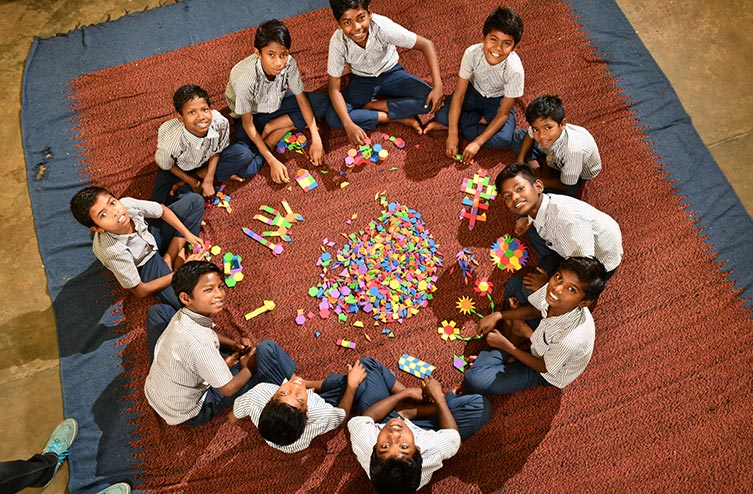
A new home
Masti Ki Pathshala is a residential bridge course (RBC) for all-round development of street children and child labourers with the goal of making Jamshedpur a child-labour free city.
“We began with the worst-affected children at railway stations and slums — rag pickers, slag pickers, beggars, the homeless and addicts who’d get involved in petty crimes, get locked up and beaten up,” says Smita Agarwal, Head, Education, Corporate Social Responsibility (CSR), Tata Steel. “This is what they had been used to all their lives.”
The project started in 2016 with a school for 100 boys with a lot of roadblocks and pushback.
“This is not a programme for poor children. This is a programme for children who face the worst forms of child labour. It is not a very well-understood concept,” explains Sourav Roy, Chief, CSR, Tata Steel. “Data was not the strong suit of this project. There is no census of the children exposed to this sort of child labour. The first step was to understand and convey to others that Jamshedpur has this problem.”
The second was a lack of template, and the third was convincing the kids.
Adarsh Gupta, Manager, Masti Ki Pathshala, and one of those who convinced Gita and her brother, recalls, “Week on week, we’d go to the station, but the kids would not respond to us. Crowd management was also a problem. People would start questioning us or shooting videos.”
He got branded as a “bacha chor” (kidnapper) in the process, a tag that came with considerable physical threat.
“It became smoother only after the Railway Police Force partnered with us and started managing the crowd,” he says. “We also realised that we’d be unable to get any child to join the programme without convincing the gang leaders they were aligned with. There were worries about human trafficking, predators for organs, etc.”
The team faced similar problems in the slums too, where it was a bigger challenge to mobilise the communities than the guardians. The only thing that smoothed the way was the Tata name and the trust it evokes.
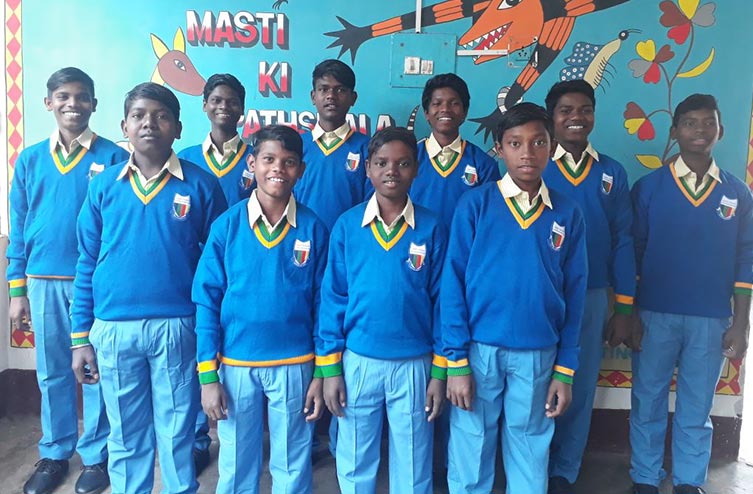
Mr Gupta says, “It took us weeks to build a rapport. The gang leaders kept insisting that we give them food and go away as the kids didn’t want more. We kept insisting they let us try. We even brought them to the school and showed them the infrastructure. They finally agreed but warned us that the kids wouldn’t stay.”
They were right. Most of the boys were victims of substance abuse and once withdrawal hit, they got restless, violent and attempted to escape.
Among them was Shashi Kumar*. The son of ragpickers and an alcoholic father, he had grown up in a slum. At 12, he started working in a garage, earning Rs 50 a week. He soon got into drugs, which pushed him into stealing, for which he was jailed four times. In custody, he was subject to severe beatings.
In a conversation at the first Masti Ki Pathshala campus —his home for almost four years — he says, “When I realised that I wouldn’t get drugs here I wanted to run away. I’d kick the doors of the teachers in anger and hit the guards. I ran away three times, but every time they came for me and convinced me to return. They didn’t give up.”
"Masti Ki Pathshala has given us a platform too. RPF has always maintained a watch on kids who live at stations. It is not difficult to catch kids, but we know the difficulties of tackling this problem. Most of them have no family that we can send them back to with any hope of improving their lives. What they needed and we needed was a safe place with a promise of a better life. That’s what Masti Ki Pathshala is. The RPF here has seen a reduction in petty crimes thanks to this initiative, and the kids have been given a new life with the kind of education that unfortunately is still only available to kids from privileged families. What can be better than that?" —Vikas Kumar, Indian Railway Traffic Service, South Eastern Railway Area Manager, Tatanagar
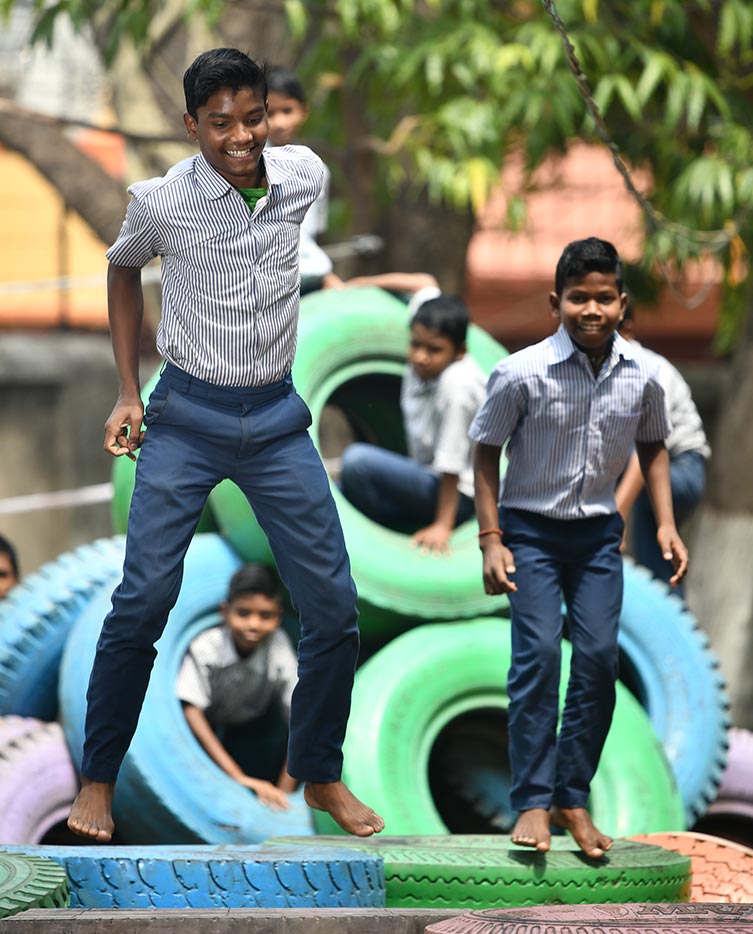
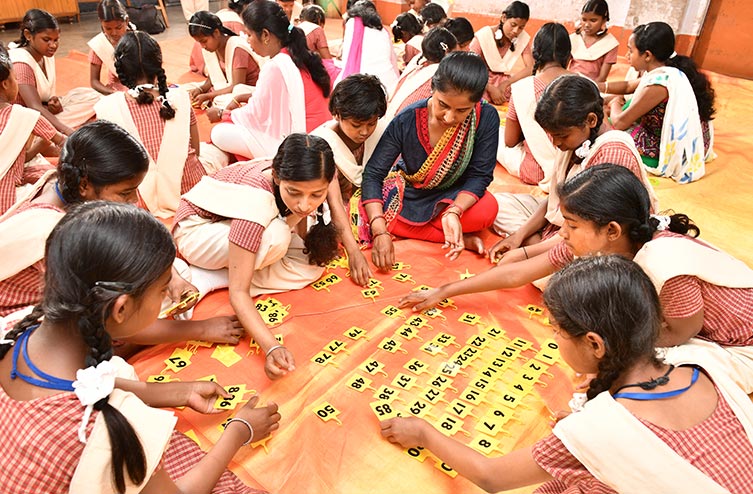
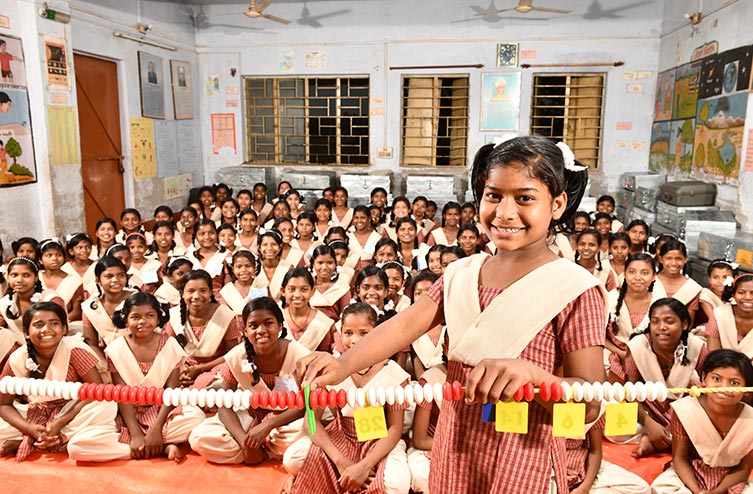
The transformation
The team was simultaneously responding to stimuli they had not anticipated — formations of gangs, violence and poor health. “One of the things that have been the most difficult to get over for me is the time it took to get them to eat the regular dal, roti, sabzi because they had never eaten a full meal,” Ms Agarwal says. “They would sniff dendrite to kill hunger.”
A team of doctors working with the Tata Steel CSR department was roped in. Dealing with clinical and pathological exams, making disease profiles of the common ailments — skin infections, being underweight, worm infestations, etc — even addictions was the easy part. The tough parts were instances like one child stabbing another. Or the time spent worrying about pregnancy when a girl ran away and returned after facing sexual abuse. Or the session to find out how many of the children had been sexually active.
“Even some of the youngest boys raised their hands. Not just sexual activity, even sexual abuse had been normalised for them at a young age,” Dr Tejinder Kaur says. “I’d worked with underprivileged children for a long time but until then, I’d never seen children who had lived through hell.”
She adds, “It’s been a tough journey, but it is gratifying to see them now when my biggest goal is to manage their nutrition to keep their haemoglobin stable — we have reduced anaemia drastically— and boost their BMI.”
Through all this, Masti Ki Pathshala also had to focus on getting children who had never heard of schooling into a learning mode. Tata Steel reached out to teachers from its Thousand Schools Programme in Odisha, with its strong creative learning programme, to train teachers at Masti Ki Pathshala to make learning engaging. It was pivotal to prepping the kids for the next step.
"We fell in love with Masti Ki Pathshala from the moment we heard the name — a place dedicated to children not only for learning but also for having fun. As chairperson of the Masti Ki Pathshala School Management Committee, I meet the children regularly. They put their points forth without hesitation. Each school is also equipped with a suggestion box that gives them anonymity. We’ve noticed that many of them use it to simply convey thanks. These are huge wins." — Chanchal Kumari, District Child Protection Officer, East Singhbhum
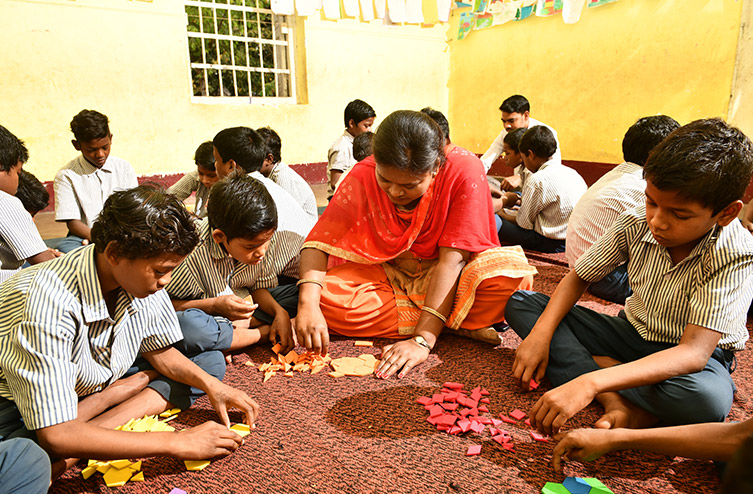
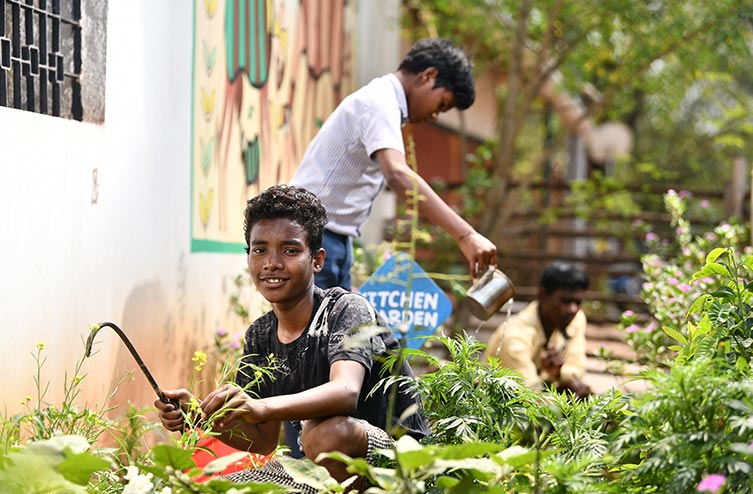
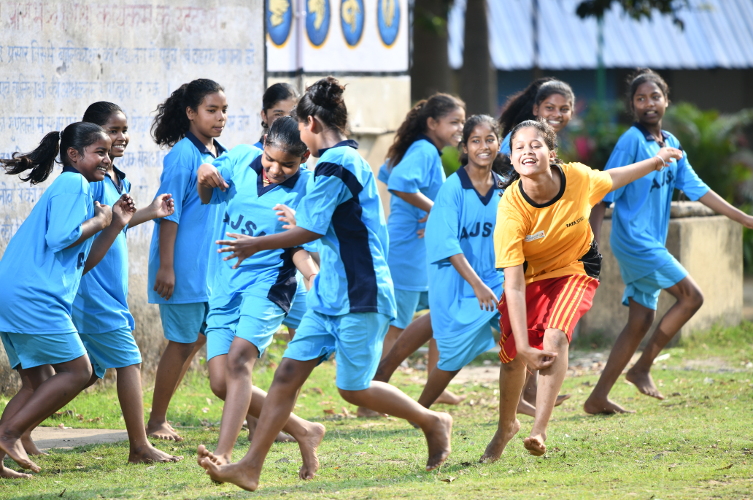
Mainstreaming
Ms Agarwal says, “We are a bridging programme. We want to bring them off the streets and get them into regular education. But we didn’t want to place them in government schools. We wanted to mainstream them into private English-medium schools with CBSE, ICSE curriculums. That was a real leap of faith.”
The process was set in motion around Masti Ki Pathshala’s first Foundation Day in August 2017. But conversations with several school principals from around the city revealed that only one principal, Francis Joseph of Kasidih High School, was willing to take a chance.
“In the first round, we selected 17 students and put them in standards III and IV, though their age was 11 years and 12 years,” he says. “It was an experiment. Can a child who has never gone to school be taught in standard III and IV? Today, we have 46 of them in classes up to standard VII.”
It set the ball rolling. With the support of Ruchi Narendran, a prominent social welfare voice in Jamshedpur and managing trustee of the JUSCO Education Mission, which runs several schools in the city, more private schools opened their doors.
She says, “There was apprehension from school principals that would these children have a negative influence. Would parents resent it? But I told them, ‘Interview the kids. Don’t take any if you think they won’t integrate’. Whichever principal met them were impressed.”
As of March 2020, five private schools had come onboard. “We need to onboard many more, and that’s the challenge we are working on this year,” she adds.
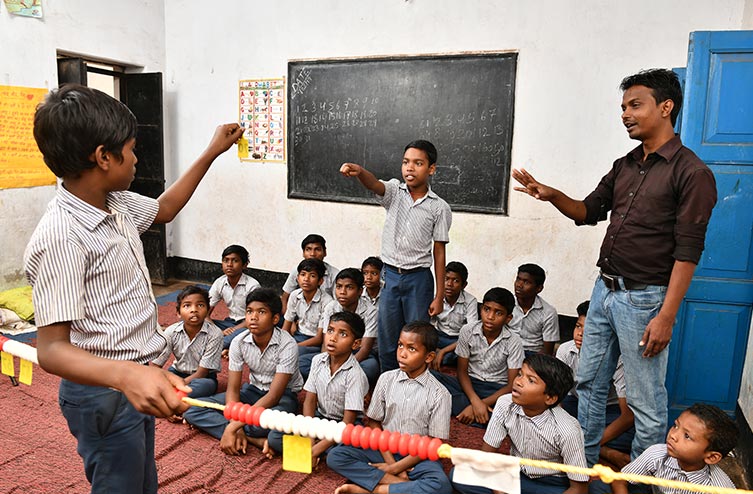
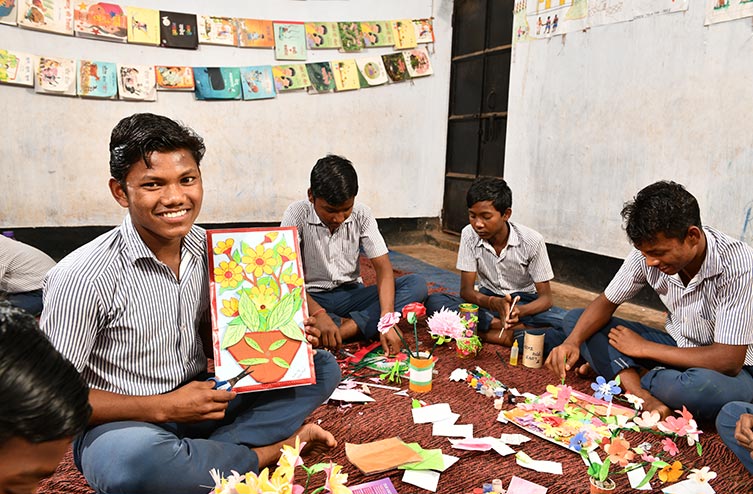
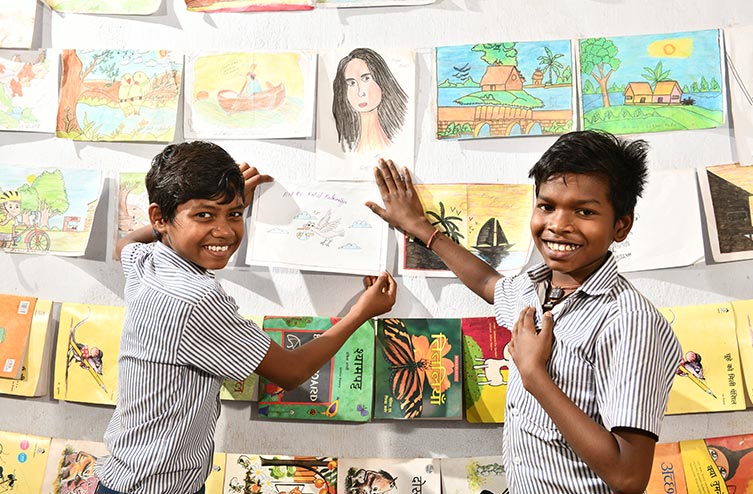
The girls school
In 2018, Tata Steel expanded the programme to girls. But this time, in addition to the addictions, violence, attempts to escape, threats of self-harm, the team came face to face with a whole new set of terrifying stories.
For Meena Karmakar*, 14, the stories pour out, one more horrific than the other. Of sleeping in a gunny sack to hide from men yet inevitably being discovered. Of women trying to lure her into the sex trade. Of seeing girls around her raped and murdered. “I narrowly escaped that fate once,” she says.
Meena was one of the toughest cases for the teachers and doctors alike. They remember the scared little girl who wouldn’t look anyone in the eye but was so trapped by her addictions that she still ran away. They remember the girl who would give up everything for the street dogs she had befriended but get violent within the safety of the camp school. And they feel a common sense of happiness when they see how far she has come.
Meena was among the first batch of Masti Ki Pathshala girls to be mainstreamed in 2019.
Milestones
The Masti Ki Pathshala story is full of such milestones. It has expanded to five campuses, two for girls and three for boys.
It has given the kids dignity that they had never experienced. The humiliations are still fresh for Ramesh Kumar*, who worked as a ragpicker since childhood to feed himself and fell prey to addictions like those around him. “My family used to keep telling me how dirty I was,” he says. “But now when I go home during festivals, I get a lot of respect from my brothers and sisters-in-law.”
Mr Roy says, “The programme has given us highs that we hadn’t thought about — the success stories of the kids, and the love we get from them.”
Another milestone was when they wrote their first annual exam and they all passed. “The students in standards IV, V and VI had to write a proper paper set, and 65% of them got first division; some of them even got distinction marks,” Ms Agarwal says. “That was a goosebumps moment for us.”
It’s not an exaggeration. The goosebumps are inevitable when you hear Meena say she wants to be a wildlife photographer — a dream she picked up as a homeless kid who’d seen people engaged in nature photography on the beaches of Odisha. It’s a dream that has finally found hope.
When Shashi, who excels in athletics and is the football team captain at his school, says he wants to be a professional football player.
When Ramesh, who cleared his standard VI exam with 71.4% and represents his school in football and cricket, says he wants to be a cop.
When Gita, who wants to become a computer engineer, says, “I am a topper in my class, and I also represent my school in football. Our teachers told us that even if we didn’t do well academically, we could do well in sports. But I want to be ahead in both.”
School diaries
The mainstreaming into private schools has been a success on many fronts. Principal Francis Joseph of Kasidih High School, says, “One milestone success is that my teachers have imbibed not recognising failures because these kids are not scared of failing. Second, the discipline of the Masti Ki Pathshala students has improved discipline in the school. Third, they have improved our calibre of cultural and sporting activities. We have been winning football for the last two years. I feel we can teach anybody now; just give us the kids. We will do it fearlessly. That is the great turnaround.”
At the heart of this success are the teachers who went out of their way and a buddy system that was incorporated at Kasidih and replicated at every other school that came onboard. Barnita Basu, junior school coordinator, Kasidih High School, says, “We placed the most sensitive students and teachers in their circles. The children were paired with classmates based on interests, not just academics.”
Initially, when the Masti Ki Pathshala students were hesitant to ask questions in classes that were conducted in English, the buddies became their voice. They also helped the children integrate into friend circles. The buddy system has now evolved to also include a senior who can provide enhanced academic support.
Ms Basu adds, “We have integrated them into school life in the true sense if the term. They are passing with respectable scores, not just scraping through. They participate in everything. The teachers have also taken this up as a challenge; we are determined to do what we can. There is no turning back.”
Cradle of dreams
According to Souvik Saha of People for Change, an organisation that works with adolescents, youth and women and has supported Masti Ki Pathshala’s curriculum, these aspirations set the programme apart.
“This place is like a cradle of dreams,” he says. “These are children with unimaginably difficult pasts who have gone from hopelessness to hope. Their dreams are not safe. They build their own expectations, which is very liberating for a child.”
For Tata Steel, the biggest challenge now is to meet these aspirations and “be true to the promise to the children in a way that allows them to find their own feet in this world,” says Mr Roy. “We are putting together a separate track that looks at aspirations.”
He elaborates, “The first step is to make sure they have access to evaluate careers, ones that they are interested in and ones that they might have not yet come across. We also intend to get them to interact with role models — not just people who have succeeded, but also those who are on their way to achieve something so that the children see the work that goes in. Second, we aim to embed teachers into this programme as aspiration coaches. Third, is creating financial pathways.”
It runs parallel to the team’s biggest hope, which is for this model to be recognised as an empathetic city model. Mr Roy says, “We love what Jamshedpur stands for in terms of Tataness. Yes, it has to be a smart city. Yes, it has to be a tech city. But it would be lovely if it is also the world’s first empathetic city. Our hope is to put forth to the rest of the world a model that proves that a million-plus city can take care of its have-nots.”
What next?
Masti Ki Pathshala began with 100 kids in FY 2016-17, scaled it to 297 kids in FY 2018-19 and 400 in FY-19-20. The cost per child during the bridging stage is Rs 35,000 per child per annum and Rs 60,000 per child per annum after mainstreaming.
With the aim of reaching every one of the estimated 3,000 child labourers in Jamshedpur, Tata Steel is working on a sustainable funding model through:
- An employee-giving programme
- Jamshedpur’s corporate ecosystem, which has already gained the support of three companies: Tata Tinplate, Tata Cummins, Metaldyne
- Non-residential bridge schools in slums with mainstreaming in government schools
- A citizen driven-model of support, which goes beyond high-net worth individuals
Mrs Narendran says, “So far, it has been a Tata Steel venture with a few other corporates. Now is the time to get the larger community involved. It must be a people’s initiative: Jamshedpur for Jamshedpur’s children. But whatever happens, we will never abandon these kids. That’s what makes Tata Steel different. We make a difference differently.”
*Names of minors changed to protect identity
—Monali Sarkar

